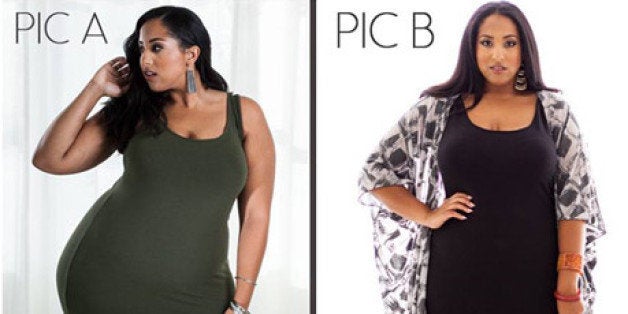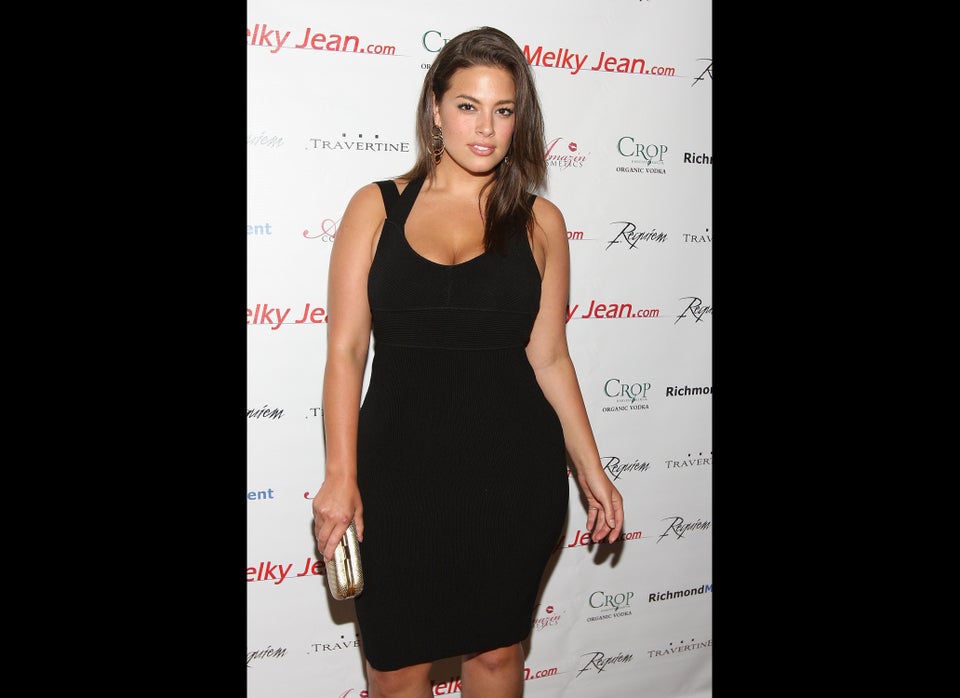
What is "plus-size"?
PLUS Model Magazine and SWAK, a plus-size designs boutique, decided to conduct an experiment. They took two photos of model Alex LaRosa modeling a tight dress, with one photo highlighting her size and the other downplaying it with a more conservative pose and outfit. Posted on Facebook, the caption asked readers to vote for the photo they preferred:
The surprising result? PLUS Model Magazine reports that "the voting was split in the middle with half of the votes for the bold, curvy pose and the other half going for the more conservative look." The outcome, writes blog editor Marcy Cruz, was surprising: "We naturally thought Pic A would win in a landslide since it shows Alex rocking her curves proudly."
But the results point to a controversial trend. "Plus-size models" are seemingly more ubiquitous than ever, but the models bearing this designation tend to be a size 12 or 14. If those women are plus-size... where do women size 22 or 24 fit in? Are actual "plus" models disappearing?
So argues PLUS Model Magazine in its January 2014 issue, as explained by editor-in-chief Madeline Jones in her editor's letter:
"The HOT TOPIC is model sizes. I'm a size 22/24 woman and I find it very difficult to shop online because most of the models are very small. Years ago when I started my career in this industry there were models size 18 in campaigns and on the cover of catalogs. As the brands continue to compete for our dollars and mainstream acceptance, they have been hiring and asking the modeling agencies for smaller and smaller models. There are brands that do not use plus size models at all and occassionally will use a size 10 or 12."
And the public is becoming conditioned by what they see. As the photo experiment found, "Pic A" was, as PLUS Model Magazine put it, "too curvy for comfort" for some people.
But many plus-size shoppers actually do want to see more representative body types. A 2013 survey conducted by PLUS Model Magazine found that a whopping 91.4 percent of respondents would prefer to see plus-size models larger than a size 12 in ads and magazines, and 94.8 percent of women said they don't consider sizes 6, 8 and 10 models to be representative of the plus-size market.
In short, plus-size shoppers want to see women who reflect them: 38.1 percent of respondents were a size 16-18 and 35.5 percent were a size 20-24. Only 16.7 percent said they're a size 12-14. According to a 2011 Women's Wear Daily report, the average dress size among American women is a 14.
As positive as the trend is, the tidal wave of plus-size model acceptance might actually be missing the mark on true, comprehensive body diversity. Do you think we need more models of sizes 16, 18 and up?
Some of the top models in the biz today:
